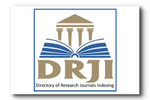Mensurando o impacto do FNDE sobre o crescimento econômico
DOI:
https://doi.org/10.5281/zenodo.5752166Palavras-chave:
FNDE, Educação, Crescimento Econômico, MRWResumo
A contribuição do capital humano para o processo de crescimento da renda per capita é amplamente aceita na literatura econômica. Neste trabalho, propõe-se uma versão alternativa aos modelos desenvolvidos por Mankiw, Romer e Weil (1992) e posteriormente generalizado por Bernanke e Gürkaynak (2001), na qual incorporou-se uma variável denominada estruturante, relacionada a aspectos de apoio à realização do capital humano. Utilizando uma base de dados em painel para os estados brasileiros no período de 1994 a 2016, avaliou-se empiricamente a relevância da inclusão dessa variável e seu impacto sobre o crescimento econômico. Os resultados mostram que o FNDE, por meio da variável capital estruturante, se apresenta estatisticamente significante para o crescimento da economia e que o capital humano continua sendo um dos principais fatores de determinação do nível de renda.
Referências
ABDAL, Alexandre. Desenvolvimento Regional no Brasil Contemporâneo. Revista Novos Estudos. Cebrap – São Paulo. V36:02 – 107-126. Julho, 2017
ALEXIOU, Constantinos; VOGIAZAS, Sofoklis; NELLIS, Joseph G. Reassessing the relationship between the financial sector and economic growth: Dynamic panel evidence. International Journal of Finance and Economics: Volume23, Issue2. April 2018, Pages 155-173. 2018.
Anuário Estatístico de Energia Elétrica. Empresa de Energia Elétrica - EPE Ministério das Minas e Energia. URL: Disponível em: http://www.epe.gov.br/AnuarioEstatisticodeEnergiaEletrica/ Forms/Anurio.aspx. Acesso em: 10/07/2018. 2018.
ARAÚJO, E.S. Desenvolvimento Urbano Local – O caso da Zona Franca de Manaus. Revista Brasileira de Gestão Urbana. V. 1, N.1 . 2009
ARELLANO, M.; BOND, S. Some tests of specification for panel data: Monte Carlo evidence and an application to employment equations. Review of Economic Studies, v. 58, n. 2, p. 277-297, April 1991.
ARELLANO, M.; BOVER, O. Another look at the instrumental variable estimation of error- components models. Journal of Econometrics, v. 68, n. 1, p. 29-51, July 1995.
BARRETO, R. C. S. & ALMEIDA, E. S. A contribuição do capital humano para o crescimento econômico e convergência espacial do Pib per capita no Ceará, in M. C. Holanda, E. B. S. Carvalho & M. P. Barbosa, eds, ‘Economia do Ceará em Debate 2008’, Fortaleza-CE: IPECE. 2009.
BARRO, Robert J. Economic growth in a cross section of countries. The quarterly journal of
economics, v. 106, n. 2, p. 407-443, 1991.
BARRO, Robert J.; SALA-i-MARTIN, X. Economic Growth. McGraw Hill, Boston MA. 1995. BARRO, R.; LEE, J. International Comparison of Educational Attainment. Journal of Monetary
Economics, v. 32, n. 3, p. 363-394, 2003.
BAYRAKTAR-SAĞLAM, Bahar. The Stages of Human Capital and Economic Growth: Does the Direction of Causality Matter for the Rich and the Poor?. Social Indicators Research, v. 127, n. 1, p. 243-302, 2016.
BECKER, Gary S.; MURPHY, Kevin M.; TAMURA, Robert. Human capital, fertility, and economic growth. Journal of political economy, v. 98, n. 5, Part 2, p. S12-S37, 1990.
BERNANKE, Ben S.; GÜRKAYNAK, Refet S. Is Growth Exogenous? Taking Mankiw, Romer and Weil Seriously. NBER Macroeconomics Annual 2001, Ben S. Bernanke and Julio J. Rotemberg, Eds.Cambridge, MA: The MIT Press, 11-57. 2001.
BLANCHARD, O.; Macroeconomic. 7th ed. Massachusetts: Pearson, 2017.
BOND, Stephen; HOEFFLER, Anke; TEMPLE, Jonathan. GMM estimation of empirical growth
models, 2001.
BONDEZAN, Kezia de Lucas; DIAS, Joilson. Crescimento Econômico no Brasil: Uma abordagem sobre o papel da acumulação de capital físico e humano. Revista de Economia, v. 42, n. 3, 2016.
BONTEMPI, Maria Elena; MAMMI, Irene. A strategy to reduce the count of moment conditions in panel data GMM. 2012.
CANGUSSU, R.C.; SALVATO, M. A. ; NAKABASHI, L. . Uma análise do capital humano sobre o nível de renda dos estados brasileiros: MRW versus Mincer. Estudos Econômicos. Instituto de Pesquisas Econômicas, v. 40, n. 1, p. 153-183, 2010.
ČADIL, Jan; PETKOVOVÁ, Ludmila. Human capital, r&d and growth – some empirical findings
The 8th International Days of Statistics and Economics, Prague, September 11-13, 308, 2014.
CASS, D. Optimum Growth in an Aggegative Model of Capital Accumulation. Review of
Economic Studies, XXXII, 1965, 233-40. 1965.
CASSELLI, Francesco. In: Bernanke, Ben S.; Gürkaynak, Refet S. 2001. “Is Growth Exogenous? Taking Mankiw, Romer and Weil Seriously”. NBER Macroeconomics Annual 2001, Ben S. Bernanke and Julio J. Rotemberg, Eds.Cambridge, MA: The MIT Press, 11-57. 2001.
CASTELLÓ-CLIMENT, Amparo; MUKHOPADHYAY, Abhiroop. Mass education or a minority well educated elite in the process of growth: The case of India. Journal of Development Economics, v. 105, p. 303-320, 2013.
CHKRAVARTY, S.R. A Generalized Human Development Index. Review of Development
Economic, 7(1), 99-114, 2003.
COELHO, R. L. P. & FIGUEIREDO, L. Uma análise da hipótese da convergência para os municípios
brasileiros, Revista Brasileira de Economia 61(3), 331–352. 2007.
COMBES, P.P.; OVERMAN, H.G. The spatial distribution of economic activities in the European Union. Handbook of Regional and Urban Economics, v. 4, cap 64, p. 2845-2909, 2004.
ERTUR, C. ; KOCH, W. Growth, Techonological Interdependence and Spatial Externalities: Theory and Evidence. Journal of Applied Econometrics, 22, 1033-1062. 2007.
EASTERLY, W.; LEVINE, R. What have we learned from a decade of empirical research on growth? It’s not factor accumulation: stylized facts and growth models. The World Bank Economic Review, v. 15, n. 2, p. 177-219, 2001.
FANG, Chuangli; WANG, Shaojian; LI, Guangdong. Urbanization, economic growth, energy consumption, and CO2emissions: Empirical evidence from countries with different income levels. Renewable and Sustainable Energy Reviews. Volume 81, Part 2, January 2018, Pages 2144-2159. 2018.
FERREIRA, P. C.; ISSLER, J. V.; PESSÔA, S. A. Testing production functions used in empirical growth studies. Economics Letters, v. 88, issue 1, p. 29-35, April, 2004.
FIRME, V. A. C. ;FREGUGLIA, R. S. Análise do crescimento dos municípios brasileiros utilizando dados em painel e controles espaciais sobre o modelo de Mankiw, Romer e Weil (1992) para o período de 1980 a 2010, in’XIX Fórum BNB / XVIII ANPEC Nordeste’. 2013.
FIRME,V.A.,; SIMÃO FILHO, C.J. Análise do Crescimento Econômico dos Municípios de Minas Gerais via modelo MRW (1992) com Capital Humano, Condições de Saúde e Fatores Espaciais, 1991–2000 Economia Aplicada, 18 (4) (2014), p. 679–716. 2014.
GAMA, Victor Azambuja. Os efeitos da qualidade da educação sobre a acumulação de capital humano e o crescimento econômico no Brasil. Tese de Doutorado. Universidade de São Paulo. 2014.
GRAMMY, A.P.; ASSANE, D. New Evidence on the effect of human capital on economic growth,
Applied Economics Letters, 4:2, 121-124, 1997
GONZAGA, E. T. de; AVILA, M. L. de. Atores, interesses e desafios na formulação do FUNDEB. Cadernos do FNDE, v. 1, n. 1, p. 27–50, 2020.
HAMERMESH, D. The demand for labor in the long run. In O. Ashenfelter and R. Layard, eds., Handbook of Labor Economics, pp. 429–471. Amsterdam: North Holland. 1986
Labor Demand. Princeton: Princeton University Press. 1993
HAUSMAN, J.A. Specification and estimation of simultâneos equation models. In: GRILICHES, Zvi; INTRILIGATOR, M.D.(Ed.). Handbook of Econometrics. Amsterdam: North Holland, 1983, v.1.
IPEA Base de dados do Instituto de Pesquisa Econômica Aplicada. URL: Disponível em
www.ipeadata.gov.br. Acesso em: 10/07/2018. 2018.
IRFFI, Guilherme et al. Impactos da abertura comercial e contribuição dos diferenciais de escolaridade sobre o nível de renda dos municípios cearenses, no período 1997-2005. Ensaios FEE, v. 37, n. 1, p. 217-254, 2016.
ISLAM, N. Growth empirics: a panel data approach. The Quarterly Journal of Economics, v. 110, n. 4, p. 1127-1170, 1995.
KAKWANI, N., SON, H. H.. Social welfare functions and developmente: measurment and policy applications. London: Palgrave Macmillan, 2016.
KAZMI, Syed Mohsin; ALI, Kazim; ALI, Ghamze. Impact of Human capital on Economic Growth: Evidence from Pakistan. 2017.
KLENOW, P.J.; RODRÍGUEZ-CLARE, A. The neoclassical revival in growth economics: has it gone too far? In: BERNANKE, B. S.; ROTEMBERG, J. J. (Ed.). NBER macroeconomics annual 1997. Cambridge, MA: MIT press, 1997, p. 83-103. 1997.
KOLAWOLE, Ogundaria; AWOKUSE, Titus. Human capital contribution to economic growth in Sub-Saharan Africa: Does health status matter more than education?Economic Analysis and Policy. Volume 58, June 2018, Pages 131-140, 2018.
KRUEGER, A. B.; LINDAHL. Education for growth: why and for whom? Journal of Economic Literature, v. 39, n. 4, p. 1101-1136, 2001.
KYRIACOU, G. Level and growth effects of human capital. C. V. Starr Center for Applied Economics, New York University, (Working Paper n. 91-26), 1991.
LABRA, R; TORRECILLAS, C. Guia Cero para datos de panel. Un enfoque pratico. UAM, v. 16, p.1-57, 2014.
LEMIEUX, T. The “Mincer Equation” Thirty Years after Schooling, Experience and Earnings”.
Paper. University of British Columbia and UC Berkeley. Outubro, 2003.
LI, Tingting; WANG, Yong. Growth channels of human capital: A Chinese panel data study.
China Economic Review, 2016.
LILLO, R. L.; TORRECILLAS, C. Estimating dynamic panel data. A practical approach to perform long panels. Revista Colombiana de Estadistica, v. 41, n 1, p. 31-52, 2018.
LJUNGQVIST, L.; SARGENT, T.J. Recursive macroeconomic theory. 3rd ed. Massachusetts: The MIT Press, 2012.
LUCAS, R. E. Jr. On the mechanics of economic development. Journal of Monetary Economics,
v. 22, n. 1, p. 3-42, 1988.
MANKIW, N. G., ROMER, D. and D.WEIL. A Contribution To The Empirics of Economic Growth.
The Quarterly Journal of Economics 107(May): 407-437. 1992.
MINCER, J. Schooling, Experience, and Earning, National Bureau of Economic Research,
distributed by Columbia University Press. 1974.
NAKABASHI, L. SALVATO, M.A. Human capital quality in Brazilian states. Revista Economia,
May / Aug. 2007.
NAKABASHI, L.; FIGUEIREDO, L. Mensurando os impactos diretos e indiretos do capital humano sobre o crescimento. Economia Aplicada, v. 12, n. 1, p. 151-171, 2008.
NELSON, Richard R.; PHELPS, Edmund S. Investment in humans, technological diffusion, and economic growth. The American Economic Review, v. 56, n. 1/2, p. 69-75, 1966.
NIZAM, Saiyidatul Saadah Ahmad; AHMAD, Rohanin; AZIZ, Nur Arina Bazilah. The Effect of the Influx of Foreign Labour in Malaysia by Augmented MRW Model. Jurnal Teknologi, 76:13, 61–66, 2015.
OSBERG, L. SHARPE, A. An index of economic well-being for selected oecd countries. Review of Income and Wealth Series 48, Number 3, September, 2002.
PELINESCU, Elena. The impact of human capital on economic growth. Procedia Economics and Finance, v. 22, p. 184-190, 2015.
PNUD - Relatórios Anuais - 2017. Disponível em: http://www.br.undp.org/content/brazil/pt/home/library/relatoriosanuais/relatorio-anual-pnud-brasil-2017.html. Acesso em: 16/10/2018.
PRITCHETT, L. Where has all the education gone? The World Bank Economic Review, v. 15, n. 3, p. 367-391, 2001.
BRASIL. Ministério da Educação. Fundo Nacional de Desenvolvimento da Educação. Relatório
de Gestão. Brasília/DF, anos de 1994 a 2016.
ROODMAN, David. A note on the theme of too many instruments. Oxford Bulletin of Economics and statistics, v. 71, n. 1, p. 135-158, 2009
How to do xtabond2: An introduction to Difference and System GMM in Stata. 2006.
ROMER, P. Endogenous technological change. The Journal of Political Economy, v. 98, n. 5, p. 71-102, 1990a.
Human capital and growth: theory and evidence. Carnegie-Rochester Conference Series on Public Policy, n.32, p.251-286, 1990b.
Idea gaps and object gaps in economic development. Journal of Monetary Economics, v. 32, n. 3, p. 543-573, 1993.
. In (comment): Bernanke, Ben S.; Gürkaynak, Refet S. “Is Growth Exogenous? Taking Mankiw, Romer and Weil Seriously”. NBER Macroeconomics Annual 2001, Ben S. Bernanke and Julio J. Rotemberg, Eds.Cambridge, MA: The MIT Press, 11-57. 2001
SALGUEIRO, Ariene da S.; NAKABASHI, Luciano; DE PRINCE, Diogo. O papel do capital humano no crescimento: uma análise espacial para o Brasil. Revista Economia & Tecnologia, v. 7, n. 4, 2011.
SIGEF – Sistema Integrado de Gestão Financeira – Sistema do Fundo de Desenvolvimento da Educação – FNDE/MEC.
SILVA, A. M. & RESENDE, G. M. Crescimento econômico comparado dos municípios alagoanos e mineiros: Uma análise espacial, Economia Política do Desenvolvimento 1(6), 133–160. 2009.
SOLOW, R. M. A contribution to the theory of economic growth, The Quarterly Journal of
Economics 70(1), 65–94. 1956.
. Technical change and the aggregate production function. The Review of Economics and Statistics, v. 39, Aug. 1957.
TEIXEIRA, Aurora; QUEIRÓS, Anabela. Economic growth, human capital and structural change: A dynamic panel data analysis. Research policy, v. 45, n. 8, p. 1636-1648, 2016.
YOSHINO, N.; ABIDHADJAEV, U. Explicit and Implicit Analysis of Infrastructure Investment: Theoretical Framework and Empirical Evidence. American Journal of Economics 2016, 6(4): 189-199. 2016.
Downloads
Publicado
Como Citar
Edição
Seção
Licença
Copyright (c) 2020 Cadernos do FNDE

Este trabalho está licenciado sob uma licença Creative Commons Attribution 4.0 International License.
Cadernos do FNDE está licenciado com a Licença (CC BY 4.0).





















